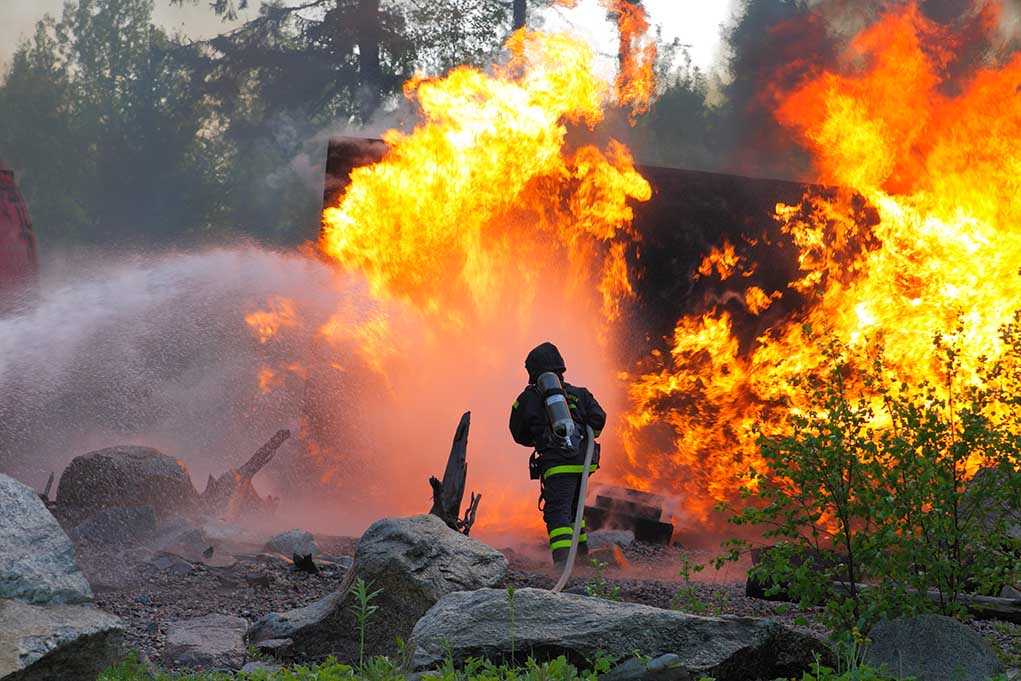
Governor Gavin Newsom just signed off on spending $101 million of your hard-earned tax dollars to build low-income housing right in the heart of California’s wildfire disaster zones—because nothing says “responsible leadership” like putting more people in harm’s way and calling it “progress.”
At a Glance
- Newsom allocates $101 million for low-income housing in wildfire-ravaged areas, sparking fierce local backlash.
- State-mandated rebuilding laws force affluent, fire-prone communities to accept affordable housing projects they strongly oppose.
- Many displaced homeowners are left uninsured and forced onto inadequate state insurance plans, deepening the crisis.
- Political tensions escalate as local leaders and residents question the wisdom of state-driven disaster recovery policies.
Newsom’s $101 Million Gamble: “Affordable Housing” in the Ashes
California’s wildfire victims are still sifting through the ashes of what used to be their homes, but Governor Gavin Newsom has a different plan for their communities: spend $101 million to erect low-income multifamily housing projects in the same high-risk fire zones that just went up in flames. The announcement, made July 8, 2025, targets areas devastated by the January Palisades and Eaton Fires—disasters that left over 10,000 families displaced, destroyed nearly 7,000 homes, and exposed the state’s chronic failure to manage both wildfires and housing.[2][4]
Rather than focus on helping victims rebuild their homes or addressing the insurance nightmare, the state is plowing forward with policies that locals call “social engineering by disaster.” The new law fast-tracks construction by rolling back environmental regulations, a move housing activists cheer and residents view as a slap in the face—especially since state mandates require that any rent-protected housing destroyed by fire must be replaced with “affordable” units, using county-wide income formulas that don’t even reflect local realities.[2]
Affluent Communities Forced to Accept State-Mandated Housing
Pacific Palisades and other hard-hit neighborhoods now face the prospect of subsidized housing towers rising from the ruins, regardless of local opinion. The state’s top-down approach has local developers and residents alike up in arms. Rick Caruso, a prominent real estate developer and former mayoral candidate, has publicly opposed building low-income complexes in fire-prone, high-value areas, warning that it will erode community character and property values. Homeowners, already battered by the fires and an insurance industry in retreat, see this as adding insult to injury.[2]
State officials, meanwhile, argue that disaster recovery is the perfect opportunity to advance “equity” by breaking up so-called “exclusionary” neighborhoods. Legally, their hands are tied: state and local ordinances require that rent-protected units be replaced with affordable housing, regardless of whether it makes sense to rebuild in the same hazardous zones. Local leaders, including Mayor Karen Bass and her newly appointed chief recovery officer, Steve Soboroff, are tasked with implementing the plan, even as community opposition mounts and lawsuits loom.[2]
Insurance Crisis Leaves Victims Behind While Sacramento Spends
While Newsom touts his $101 million spending spree as “help for the vulnerable,” the reality for many fire victims is grim. Thousands remain homeless, trapped in bureaucratic limbo, or forced onto the state’s FAIR insurance plan after private companies pulled out. The FAIR plan offers minimal protection, leaving families unable to rebuild or even buy adequate coverage. Instead of direct relief for these taxpayers, the state’s response is to funnel funds into new construction projects that few in these neighborhoods ever asked for.[2][4]
The insurance crisis, coupled with the state’s housing mandates, is set to change the fabric of these communities for good—and not in a way the original residents support. The policy may set a precedent for future disaster responses, signaling to every wildfire-prone neighborhood in California that their tax dollars are now fair game for Sacramento’s social experiments, whether they like it or not.[2]
Political Fallout and a Precedent That Can’t Be Ignored
The backlash is already shaping up to be a major flashpoint heading into the next election cycle. Residents accuse the state of exploiting disaster to push an agenda that disregards local control, common sense, and basic public safety. While housing advocates are thrilled, legal experts note that the requirements are, for now, legally binding—though that hasn’t stopped a flood of opposition and new lawsuits, particularly against Southern California Edison, whose power lines may have sparked the Eaton Fire in the first place.[1][2]
As the smoke clears, the real tragedy may not be the wildfires themselves, but the erosion of local autonomy and the growing sense that Sacramento’s priorities lie anywhere but with the law-abiding, taxpaying families who built these neighborhoods in the first place. If disaster recovery now means the state gets to remake your town in its own image, it’s not hard to see why so many Californians are ready to pack up and head for freer, saner pastures.











